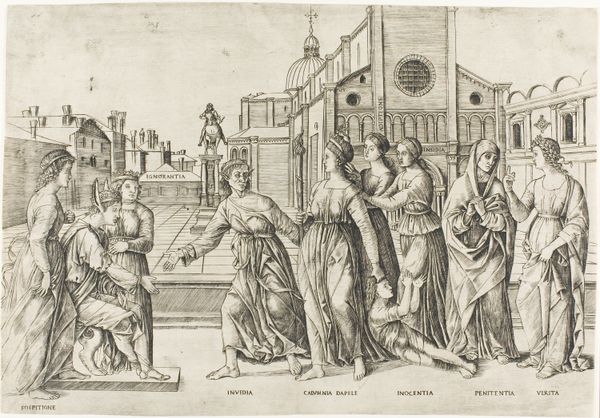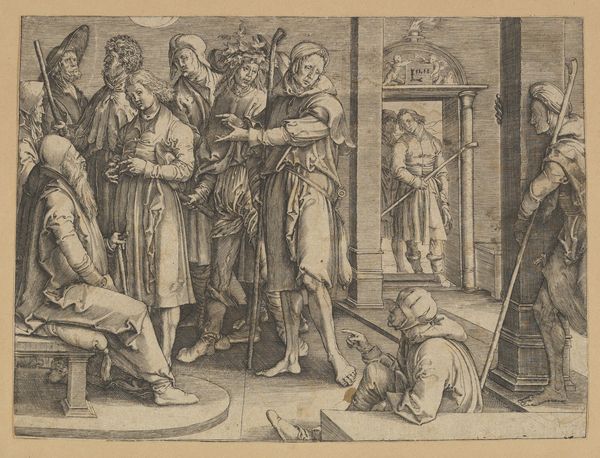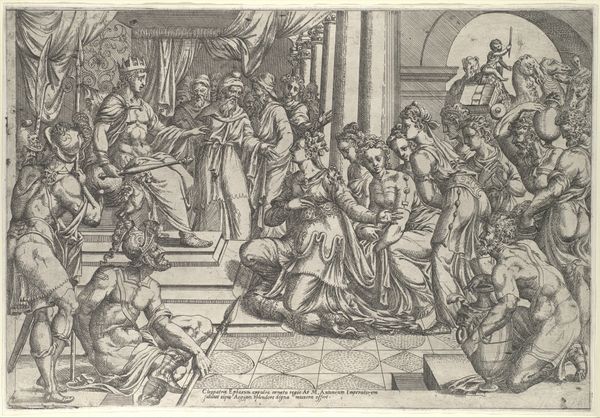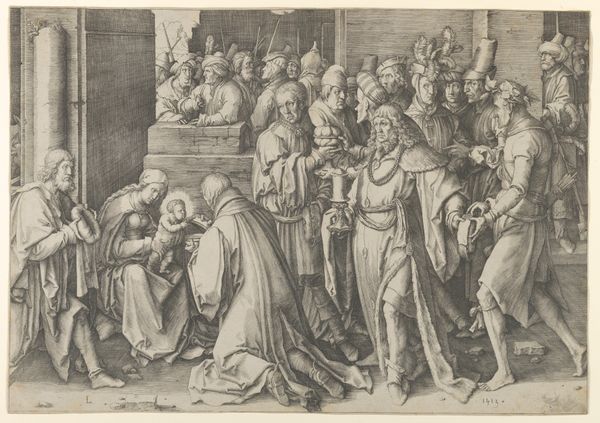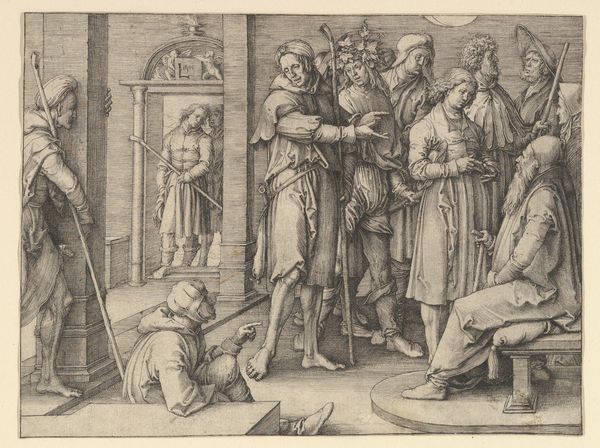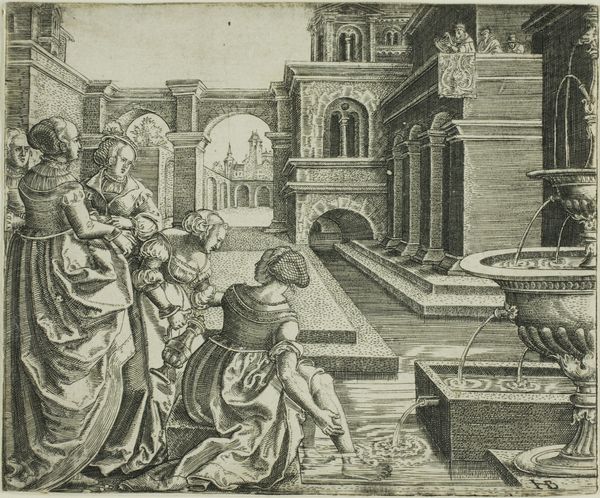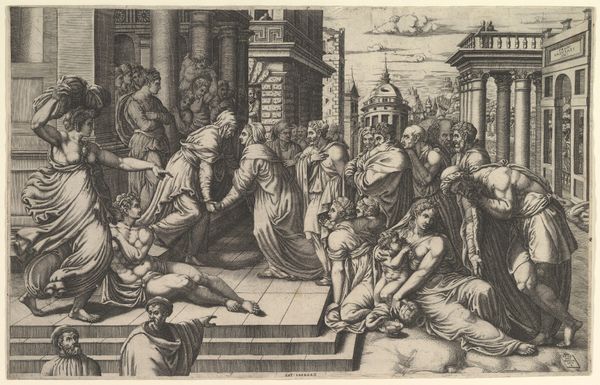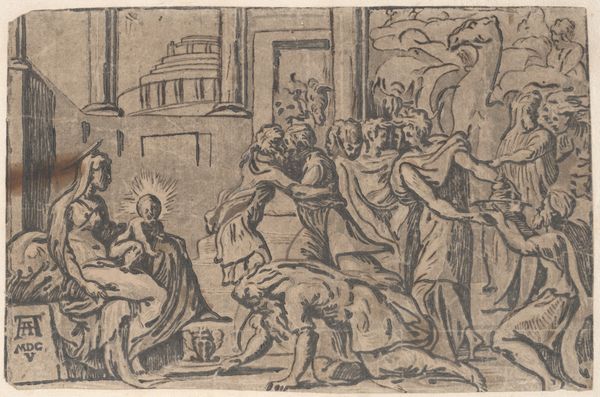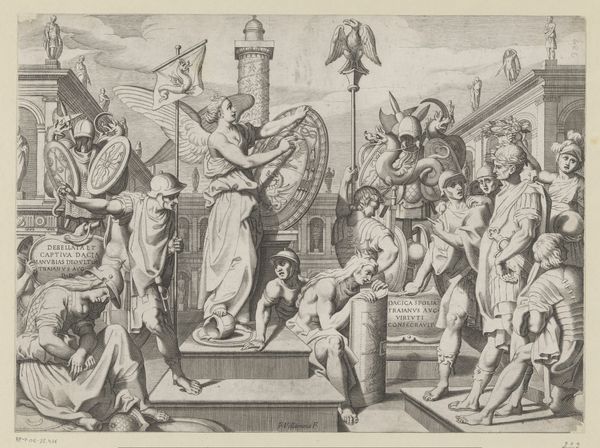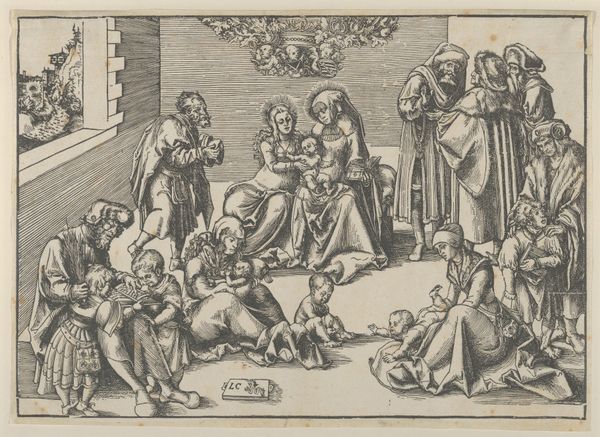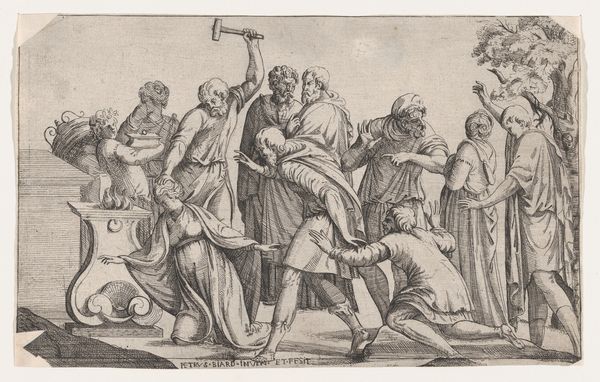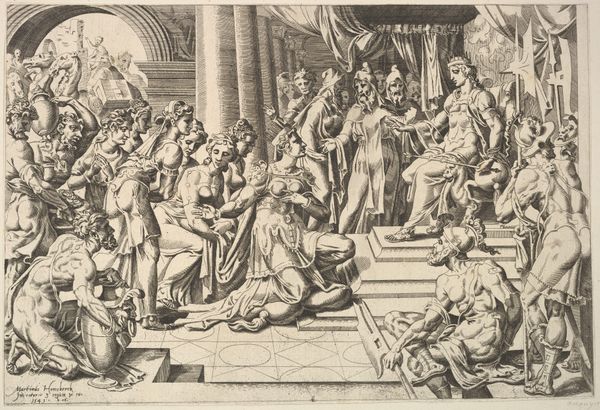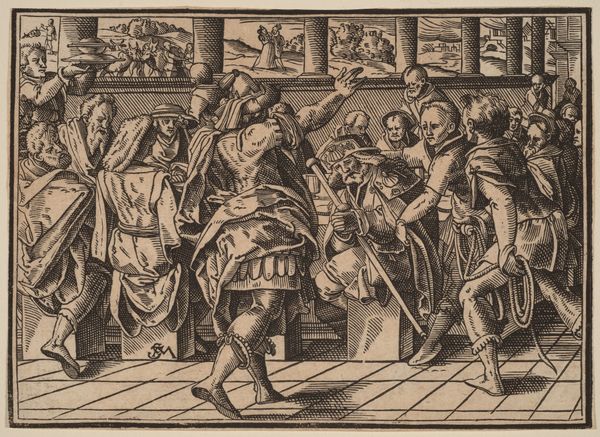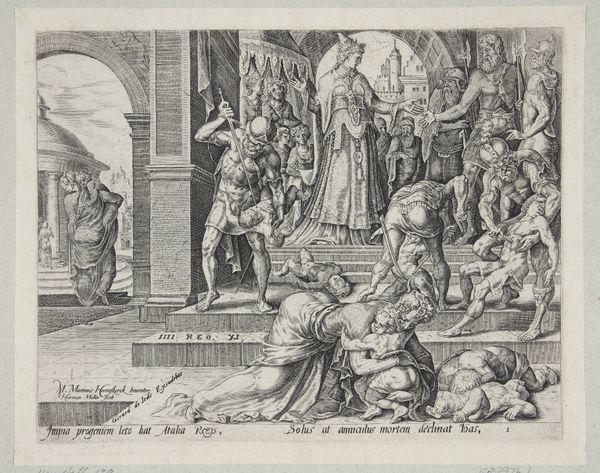
drawing, print, engraving
#
drawing
#
narrative-art
# print
#
figuration
#
11_renaissance
#
line
#
history-painting
#
italian-renaissance
#
engraving
Dimensions: 11 1/2 x 17 3/16 in. (29.21 x 43.66 cm) (image)
Copyright: Public Domain
Editor: This is Girolamo Mocetto's "Calumny of Apelles," a print from around 1500-1506. It’s currently housed at the Minneapolis Institute of Art. The detail is incredible; so many figures in one scene! It's visually busy, but there is a clear horizontal movement towards the right. How would you interpret the work based solely on its formal qualities? Curator: The linearity is indeed striking. Note how Mocetto uses line not only to delineate form, but also to create tonal variations through hatching and cross-hatching. Observe, too, the calculated use of empty space versus densely worked areas. How does this distribution contribute to the narrative’s legibility, do you think? Editor: Well, the density seems to increase around the central figure, perhaps to draw the eye there and emphasize the tension of the scene. What do you make of the figures themselves and their arrangement within the composition? Curator: Absolutely. The exaggerated gestures and poses—the twisting bodies, the reaching hands—contribute to a sense of dynamism. The linear quality overall adds to a certain angularity. The architectural setting provides a rigid framework, juxtaposed with the chaotic human drama. How does the foreground arrangement relate to the building in the background? Editor: It seems to create a stage, where the architectural structure reinforces the sense of narrative. It is creating a powerful contrast, perhaps, or is that too subjective an interpretation? Curator: The linear structure of the architectural setting adds to a structured and clear background. By drawing a viewer in with lines and shapes, Mocetto’s strategic planning makes for a lasting engraving. It emphasizes, rather, the intellectual architecture underpinning the work. Thank you, this discussion gave me much to consider. Editor: Indeed! I’ve learned a lot by thinking through this using formal elements, and look forward to using this perspective more in my work.
Comments
minneapolisinstituteofart almost 2 years ago
⋮
Calumny of Apelles combines ideals of Renaissance art with an early view of the square outside the church of Saints Giovanni and Paolo in Venice. It responds to a challenge made by the 15th-century theorist Leon Battista Alberti (1404-72) that artists should recreate a lost work by the Greek painter Apelles. Here, a king, advised by Suspicion and Ignorance, sits in judgment with the ears of a donkey. Led by Envy and followed by Deception and Treachery, Calumny (Slander) drags Innocence before the king. After the Piazza San Marco, this was the most important square at a time when the Republic's military confidence was at its peak. Andrea Verrocchio's (c. 1435-88) equestrian statue of Venetian mercenary captain Bartolommeo Colleoni (c. 1395/1400-75) was unveiled in the piazza in 1495, the year the plaza was paved.
Join the conversation
Join millions of artists and users on Artera today and experience the ultimate creative platform.
